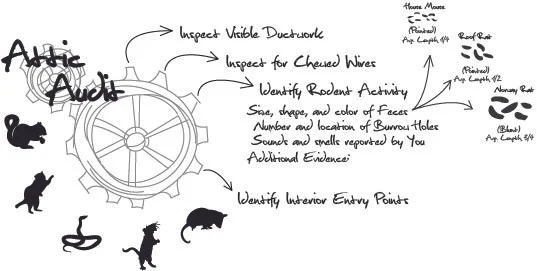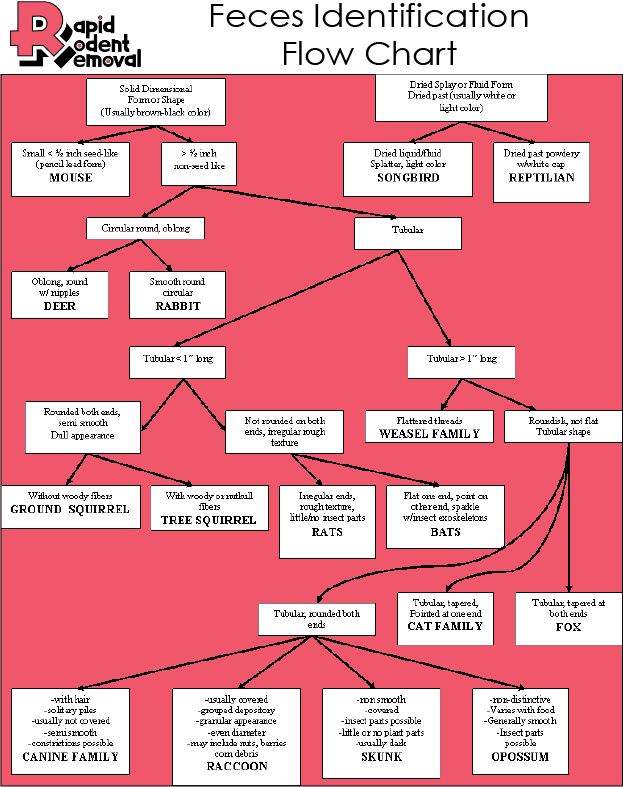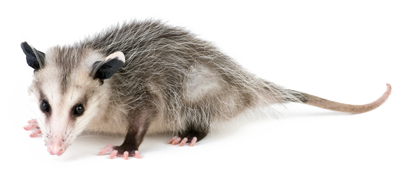Skunks
The Remarkable World of Skunks: A Comprehensive Guide
Table of Contents
Introduction to Skunks
Classification and Species
Habitat and Distribution
Physical Characteristics
Diet and Feeding Habits
Reproduction and Lifecycle
Skunks and Humans
Conservation and Threats
Introduction to Skunks
Skunks are mammals belonging to the family Mephitidae, well-known for their striking black and white coloration and their notorious ability to emit a pungent, foul-smelling spray as a defense mechanism. This fascinating group of mammals comprises a diverse array of species, each with unique adaptations suited to their respective habitats.
We recommend scheduling a free rodent control inspection, with Rapid Rodent Removal. Since all living things need food, water, and shelter to survive, it is not uncommon for a critter to seek shelter in your property. As we continue to industrialize, the habitat available to all wildlife is continuously shrinking while the population of wildlife is increasing.
Click below to further figure out which animal is plaguing your home for Wildlife Removal.
Classification and Species
There are 12 recognized species of skunks, which are classified into four genera:
Mephitis: This genus includes two species, the striped skunk (Mephitis mephitis) and the hooded skunk (Mephitis macroura).
Spilogale: Four species of spotted skunks are classified under this genus, including the eastern spotted skunk (Spilogale putorius) and the western spotted skunk (Spilogale gracilis).
Conepatus: Four species of hog-nosed skunks belong to this genus, such as the American hog-nosed skunk (Conepatus leuconotus) and the Humboldt's hog-nosed skunk (Conepatus humboldti).
Mydaus: The two species under this genus are the Indonesian stink badger (Mydaus javanensis) and the Palawan stink badger (Mydaus marchei).
Habitat and Distribution
Skunks inhabit a wide range of habitats, including forests, grasslands, deserts, and suburban areas. They are predominantly found throughout North, Central, and South America, with some species also occurring in parts of Southeast Asia. Skunks are highly adaptable and can thrive in diverse environments, provided that there is sufficient food and suitable denning sites.
Physical Characteristics
Skunks are small to medium-sized mammals, ranging from 40 to 94 cm in length, including their tails. They are characterized by their distinctive black and white fur, which serves as a warning signal to predators. The pattern of white markings varies among species, with some featuring bold stripes and others exhibiting spots or broken bands.
Skunks possess well-developed anal scent glands that produce a foul-smelling spray composed of sulfur compounds. This spray can be ejected up to 3 meters, and serves as an effective deterrent against predators. In addition to their odoriferous defense, skunks are equipped with sharp claws for digging and powerful jaws for crushing prey.
Diet and Feeding Habits
Skunks are omnivorous, with a diet consisting of insects, small mammals, birds, eggs, amphibians, reptiles, fruits, nuts, and seeds. They are opportunistic feeders, taking advantage of available food resources in their environment. Skunks have a particular fondness for insects, including beetles, crickets, grasshoppers, and ants, which they locate using their keen sense of smell and excellent digging abilities.
Reproduction and Lifecycle
Skunks are generally solitary animals, coming together only during the breeding season
, which occurs between February and April for most species. After a gestation period of approximately 60 to 75 days, females give birth to a litter of 2 to 10 young, called kits. The kits are born blind, deaf, and helpless, with their eyes and ears opening at around three weeks of age.
During their early development, the kits remain in the den under the protection of their mother, who is responsible for their care and feeding. After about two months, the young skunks begin to venture outside the den and learn essential skills such as foraging and scent marking. By the time they are four months old, the kits become independent and disperse to establish their own territories.
Skunks have a relatively short lifespan in the wild, averaging around three years. However, in captivity, they can live up to 10 years, provided they receive proper care and nutrition.
Behavior and Social Structure
Skunks are primarily nocturnal creatures, remaining active during the night and resting in their dens during the day. They are not true hibernators but may exhibit a period of reduced activity, known as torpor, during the winter months in colder climates. This period of inactivity helps them conserve energy and survive when food resources are scarce.
Although skunks are generally solitary animals, they may occasionally form small, loose-knit social groups, particularly during the winter months when they share dens for warmth. Despite their reputation for aggression, skunks are relatively docile and would prefer to avoid confrontation whenever possible. If threatened, they will display a series of warning signs, such as hissing, stomping, and raising their tail, before resorting to their potent spray.
Skunks and Humans
Human encounters with skunks are common, particularly in suburban and urban areas where these adaptable mammals have learned to take advantage of food and shelter provided by human habitation. While skunks can be beneficial to humans by controlling insect and rodent populations, they are often considered nuisances due to their strong odor and potential to transmit diseases such as rabies.
To prevent skunks from becoming a problem, it is essential to secure garbage cans, eliminate sources of food, and block access to potential denning sites around your property. In cases where skunks have already established a den, it is best to consult a professional wildlife removal service to ensure the safe and humane relocation of these animals.
Conservation and Threats
While most skunk species are currently considered stable and not at immediate risk of extinction, they face numerous threats that could impact their populations in the future. Habitat loss due to urbanization, deforestation, and agricultural expansion is a primary concern, along with increased mortality from road accidents and persecution by humans.
Conservation efforts to protect skunks and their habitats include habitat preservation, public education, and the implementation of wildlife corridors that enable skunks to safely traverse human-dominated landscapes. By understanding the ecological roles and unique adaptations of these often misunderstood mammals, we can work together to ensure their continued survival and appreciate the remarkable world of skunks.
All About Animals …
Suspendisse nec congue purus. Aenean eu justo sed elit dignissim aliquam. Suspendisse nec congue purus. Class aptent taciti sociosqu ad litora torquent per conubia nostra, per inceptos himenaeos.
RATS
SQUIRRELS
RACCOONS
OPOSSUMS
SNAKES
BATS
WILDLIFE REMOVAL
articles:
What does a rat nest look like ?
What is a Squirrel King










